Is Knit a 4-Letter Word? How to Sew with Knits!
My quilty friends, we’ve talked about many things within the pages of this blog. We’ve covered flannel and linen fabric, cotton and poly thread; we’ve even waved goodbye to conventional wadding and ushered in a new era of bamboo, wool, and midnight-shaded batting. But there’s still one material in which we've barely skimmed the surface, even though it’s a very fine surface indeed.
I’m talking about knits, people. Stretchy, squishy, yummy, scrummy, wrap me up in a tight-fabric-burrito-cause-they’re-so-soft – knits. Back on our Quilty Adventure through different substrates, we talked specifically about jersey knit, so be sure to check that out too.
If you follow along with my personal sewing adventures, you may know that I recently started quilting with knits and even designed a pattern that works exceptionally well with it, the Bohemian Garden quilt pattern. Through my experiments and studies, I learned some things that make this substrate an incredibly fun fabric for quilting. So take this journey with me cause knits are wonderfully flexible, so we can be too!
You May Also Like...
How to Sew with Knits: A Basic Knit Q & A
Q: In two sentences, what’s the difference between knit and regular quilt-weight cotton?
A: Two sentences you say? Oh dear...let me think...OK, the most important takeaway is that your typical quilt-weight cotton is made from two threads being woven together – which means it will fray when you cut it. Knits, however, are created using one continuous yarn being looped back and forth – the result is a fray-free world.
You can see what I'm talking about below. Notice the dark pink fabric on the left has a clear weave and edges that fray. Do you see how the light pink knit on the right has tiny rounded loops as the raw edge? You'll have to look really closely for that. But if you do, you'll notice that even this light-weight knit looks like a knitted sweater...a tiny, mouse-made sweater.
Trending patterns!
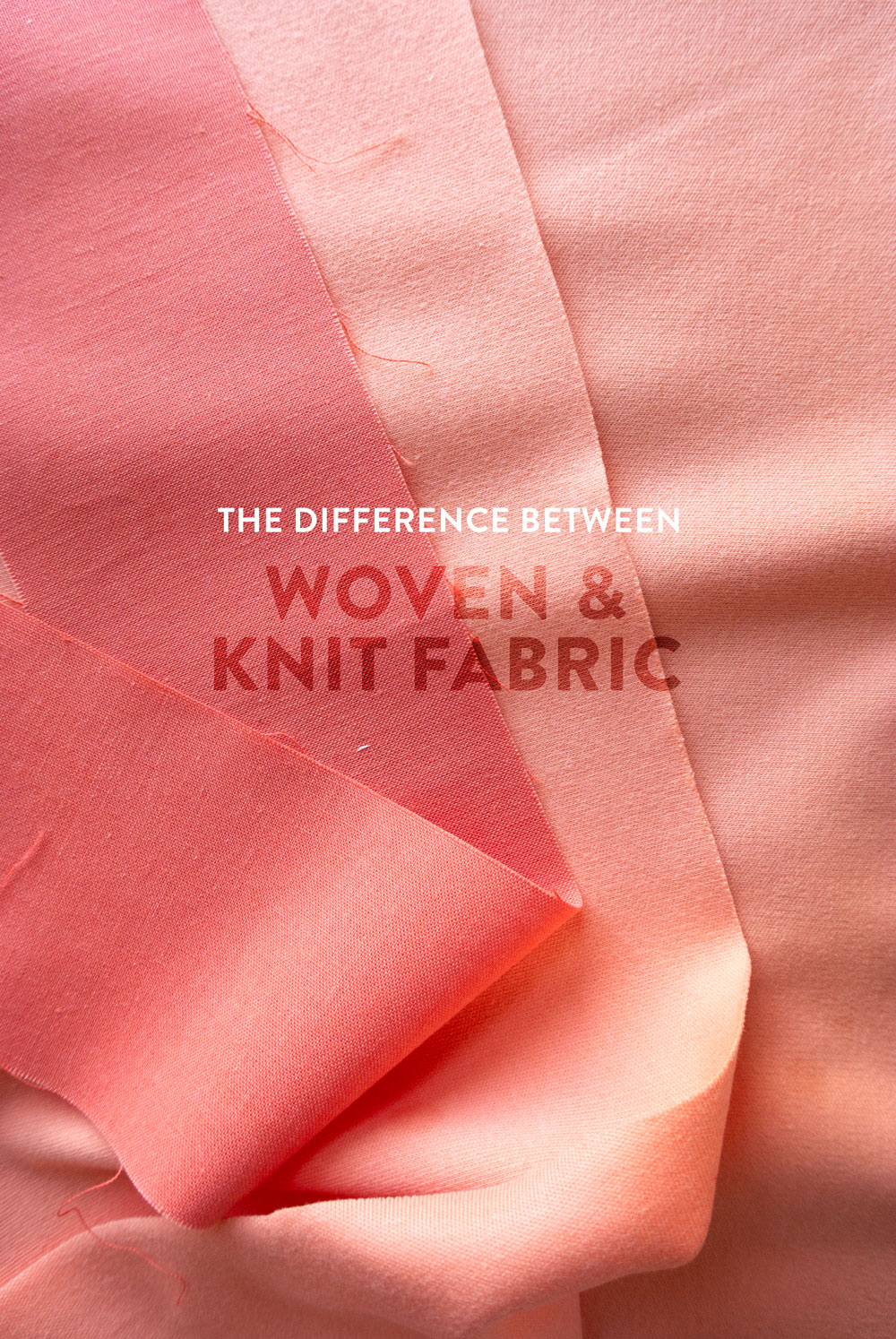
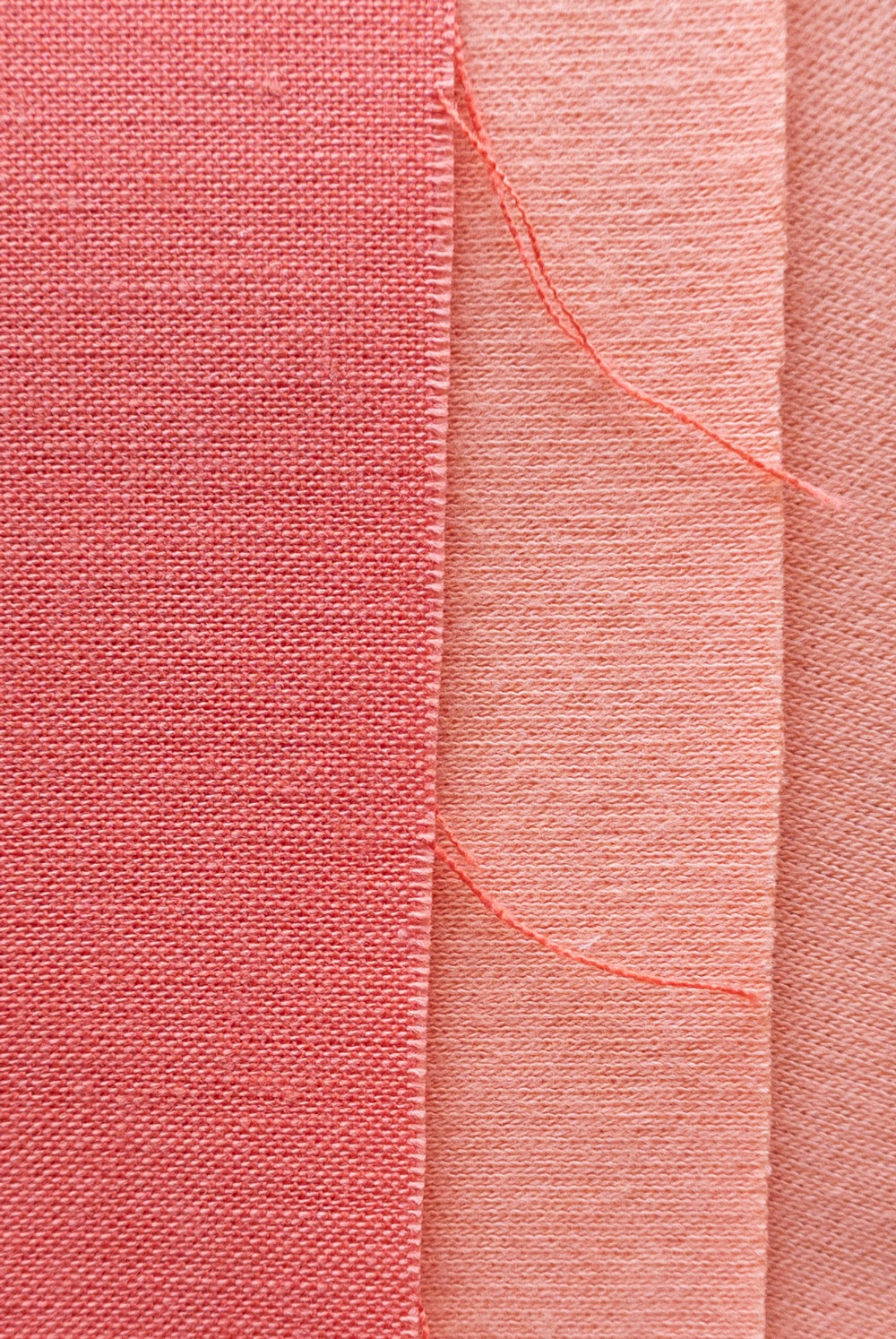
Q: Are Knit and Jersey the same thing?
A: Being new to knits, I started off using the terms “jersey” and “knit” interchangeably. For the most part, you can get away with that and you won’t be wrong. However, if you want to get specific, and technically “correct,” jersey is a type of knit. Knitted fabric without a distinct rib is generically called jersey.
Q: Now that you bring it up, is jersey from New Jersey in the United States?
A: Those of us in the U.S. would like to believe that to be true, however, jersey originated from the Bailiwick of Jersey, a Channel Island off the coast of England. The fabric was commonly used for fishermen’s clothing and was originally a lot heavier than the quilt-o-licious jersey knits we know today.
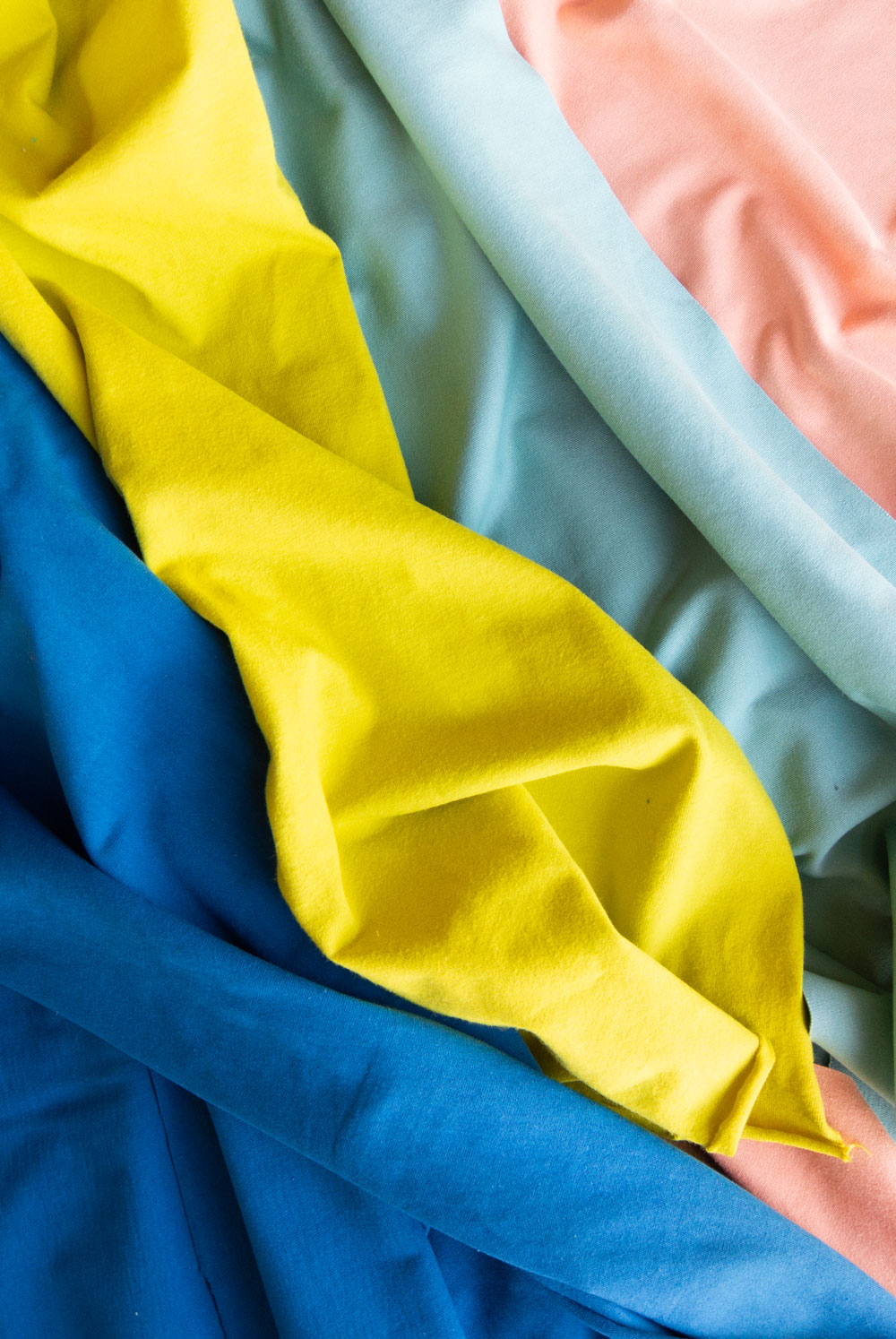
Q: What should I look for when buying knits for quilting?
A: This is mostly preference, but since I’m the one writing, I’ll give you my preference. If you aren't planning on wearing this knit project, look for fabric with some weight to them.
If the store or website is listing weight, they are using one of two different measurements – GSM (grams per square meter) or ounces. When measured in GSM, the weight of the fabric varies between 100 GSM and 500 GSM, with the smaller number being the lighter material. A 100 GSM knit is going to feel like your lightest t-shirt material and a 500 GSM will feel heavy like a hoodie.
Medium weight knits are between 9.5 and 11.5 oz. Medium weight knit is the most common weight for a T-shirt, and is roughly 350 GSM. Medium to heavy weight is 12 to 14 oz. and anything over 15 oz. is considered heavyweight.
I suggest shooting for 10 - 12 oz. Knits lighter than that can end up being a little transparent. If your fabric shop or favorite online shop does not list weight, look for one that is mostly cotton or labeled cotton interlock.
Q: You just threw in another term! What is interlock?
A: Sorry! So sorry! I didn’t mean to throw new information at you this late in the blog post. I’ll keep it brief. Interlock knit is a wonderful first-timers knit because it’s thicker than your average jersey and doesn’t have the same amount of stretch. It’s made up of two rows of stitches, one directly behind the other – which gives it its thickness and allows it not to curl at the edges. (You know how sometimes your jersey T-shirts can do that?)
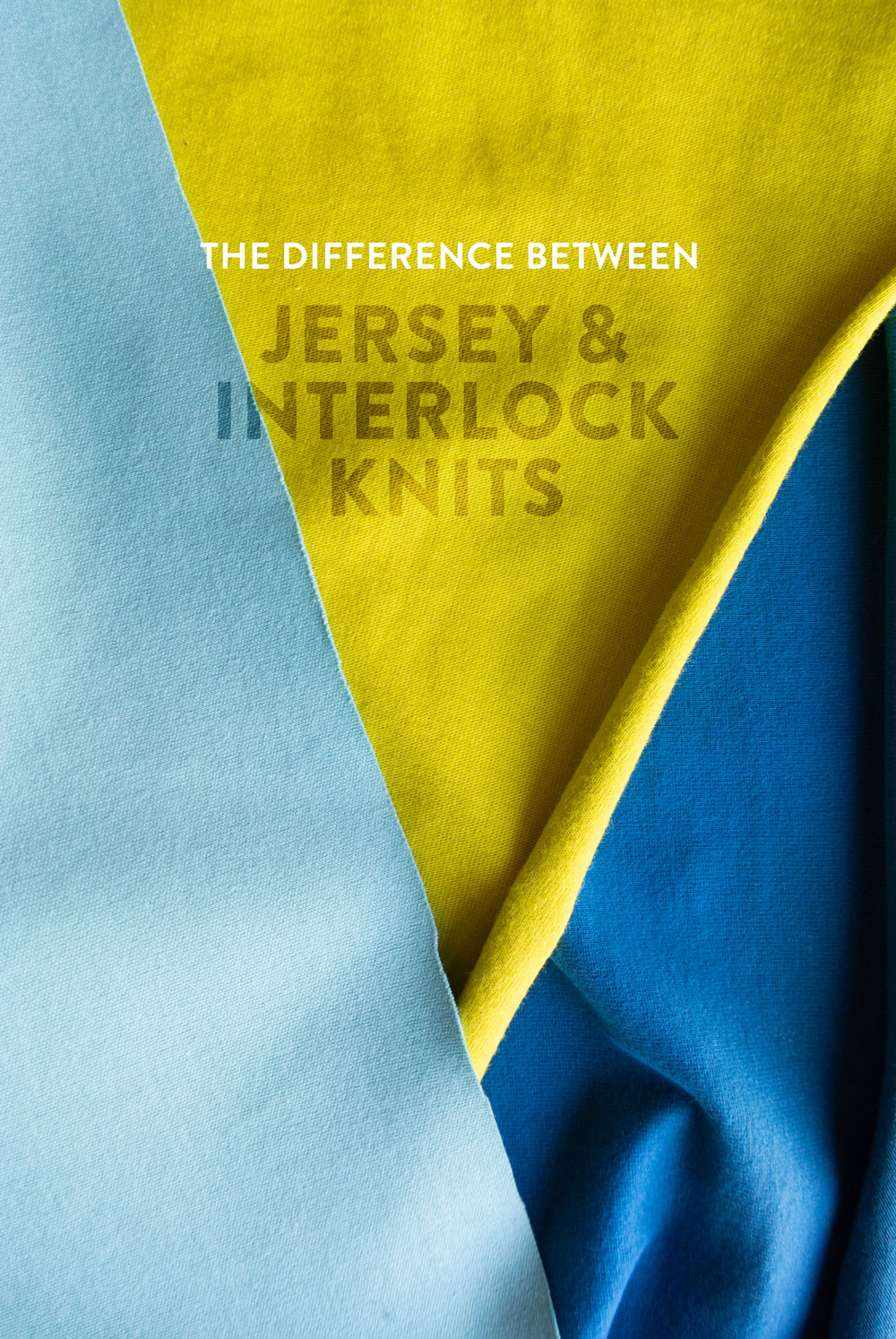
In the photo above, the bright chartreuse is a jersey knit and the light blue is an interlock knit. The obvious difference is what the raw edges do – one curls and the other stays nice and flat.
I used a mostly cotton interlock knit to sew my original Bohemian Garden quilt. The Bohemian Garden wholecloth quilt, however, uses two large pieces of jersey knit. See how the edges roll a bit at the binding? (The same Boho Garden quilt pattern includes instructions for both versions.)
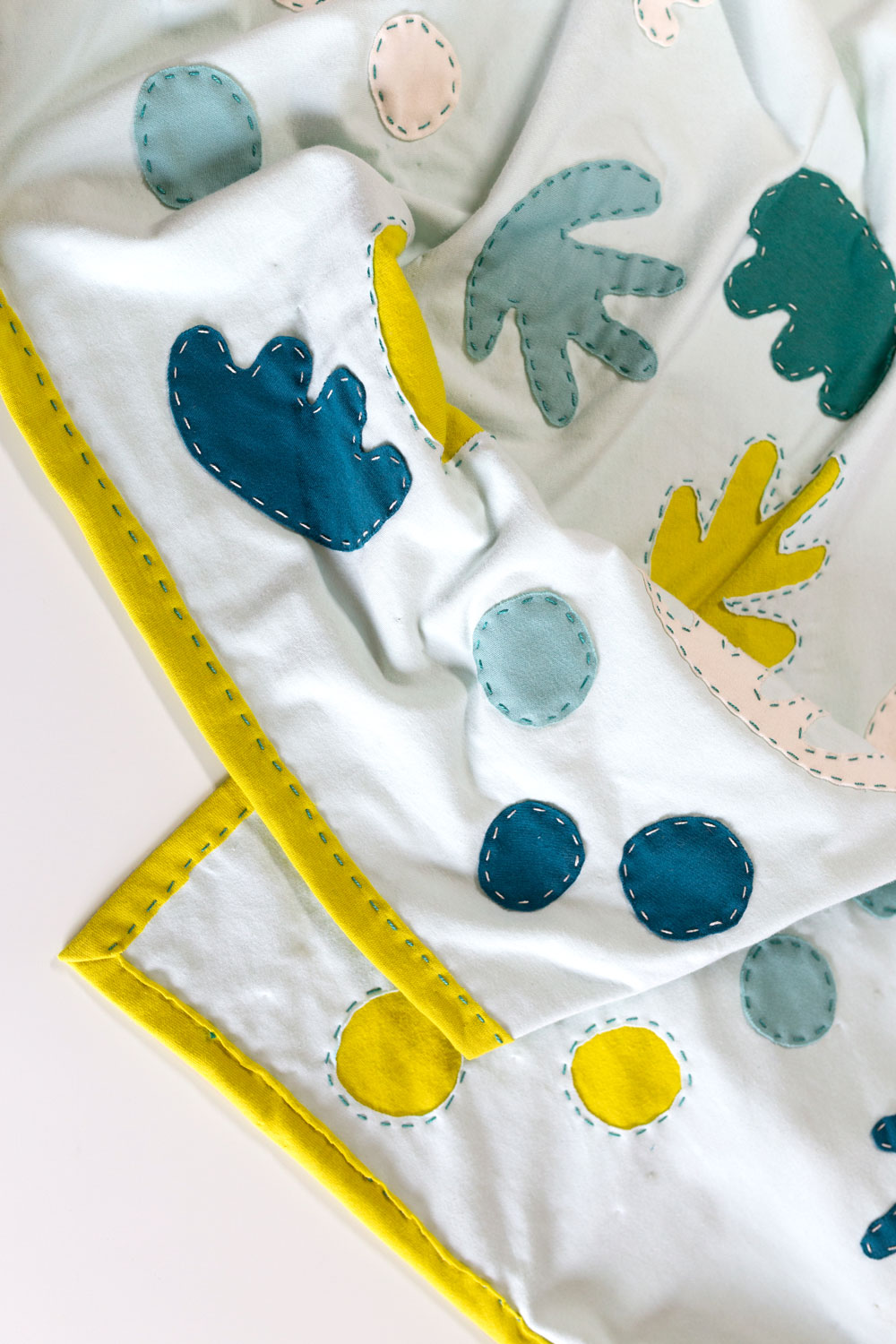
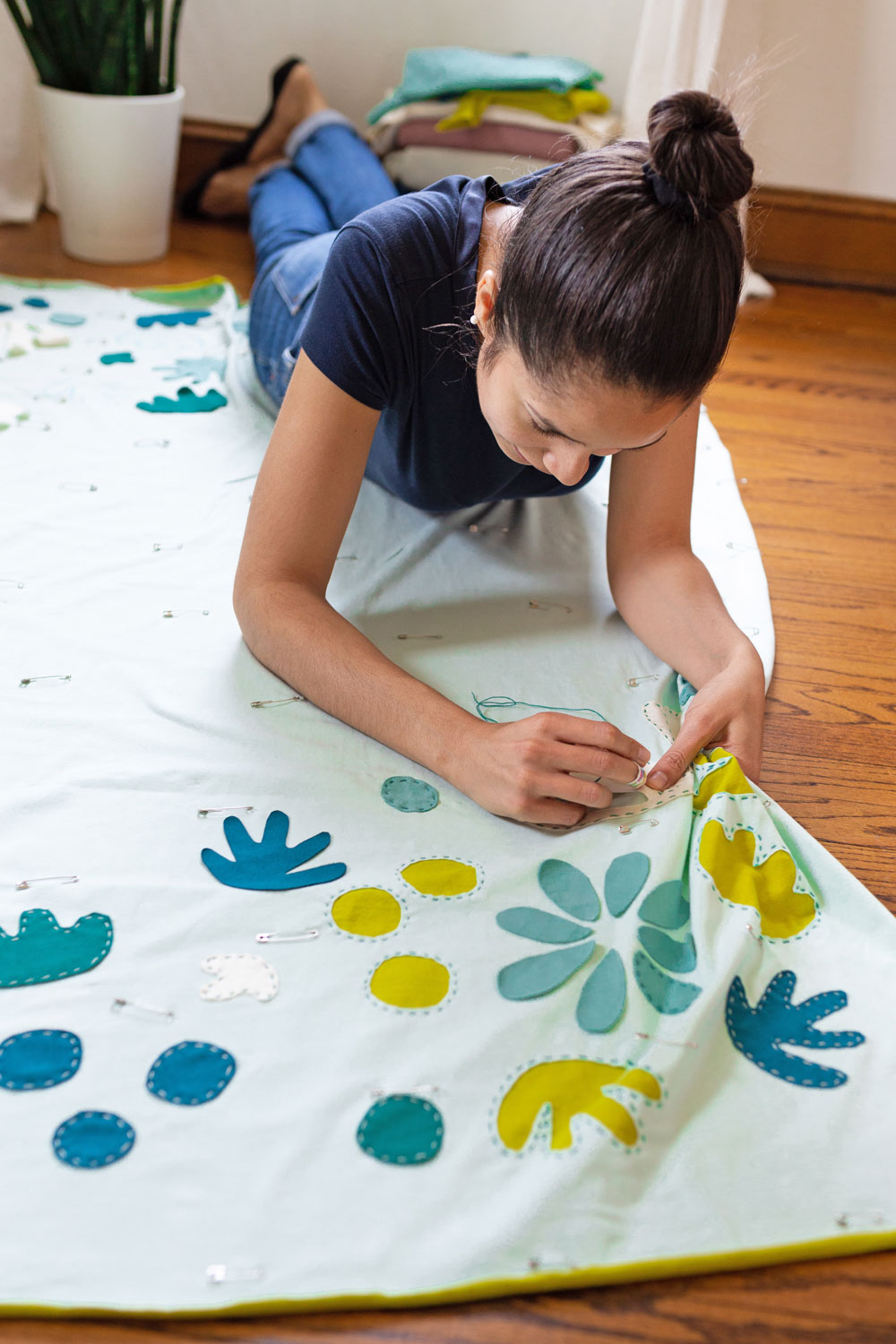
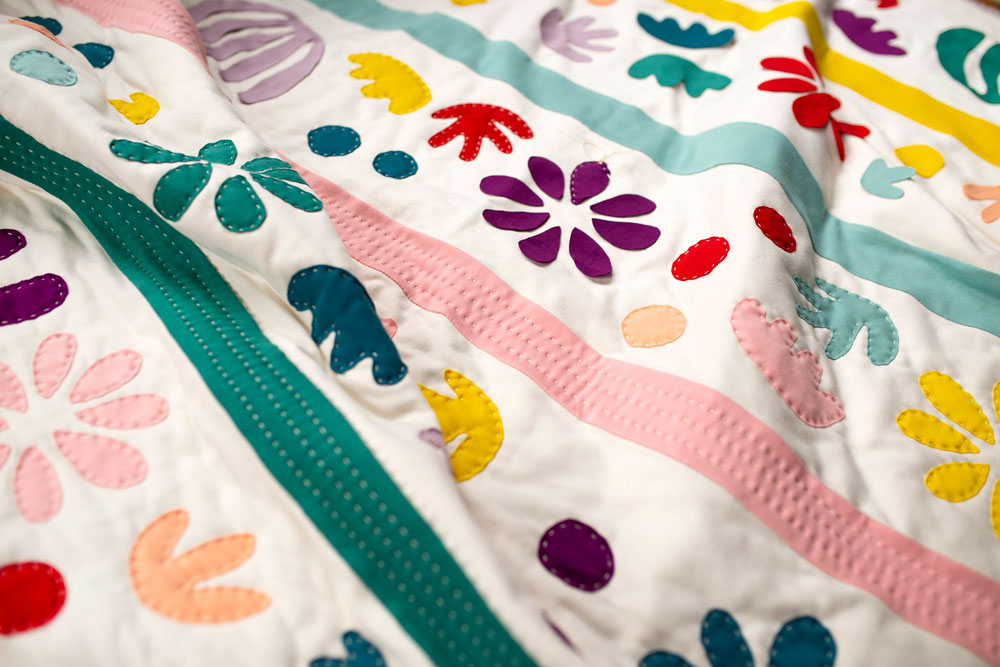
Q: I’ve purchased my knit and now I’m ready to sew. I scared.
A: Don’t be scared! Hold my hand. Let’s do this together. If you are using your basic sewing machine you have two options:
- Flip your regular straight stitch to either a stretch stitch (looks like a lightning bolt) or a zig-zag stitch. You can use the same thread you always use when piecing a quilt. I like to strap on my walking foot, but as long as you have a foot that’s wide enough for your zig-zag stitch, you’re good.
- Use wooly nylon thread. It's a stretchy thread that will stretch with the fabric. Heads up – it's a bit challenging to work with. You may have better luck just sewing a zig zag.
I should also note that most people will suggest you use a ball point needle rather than a basic universal needle, but I don't do that and haven't had any problems yet. The reason people suggest this is because ball point needles aren't as sharp and push through the fabric loops rather than pierce the fabric. You may want to switch to a ballpoint needle if you are having problems with your fabric tearing.
Are you ready? Now sew...slowly. I mean, not weirdly slow, just sew a bit slower than you normally would. Let your feed dogs do their job and feed the knit through the machine. I almost don’t even want to say it, because it’s not going to happen because you are a great quilter, but try not to stretch the fabric at this point. See? I shouldn’t have said anything. You totally weren’t going to do that anyway!
If your machine only has a straight stitch, don’t count yourself out. There’s this magical stuff called stretch thread that you can get. Load your top and bobbin thread with that, and your straight stitch will remain secure without fear of popping.
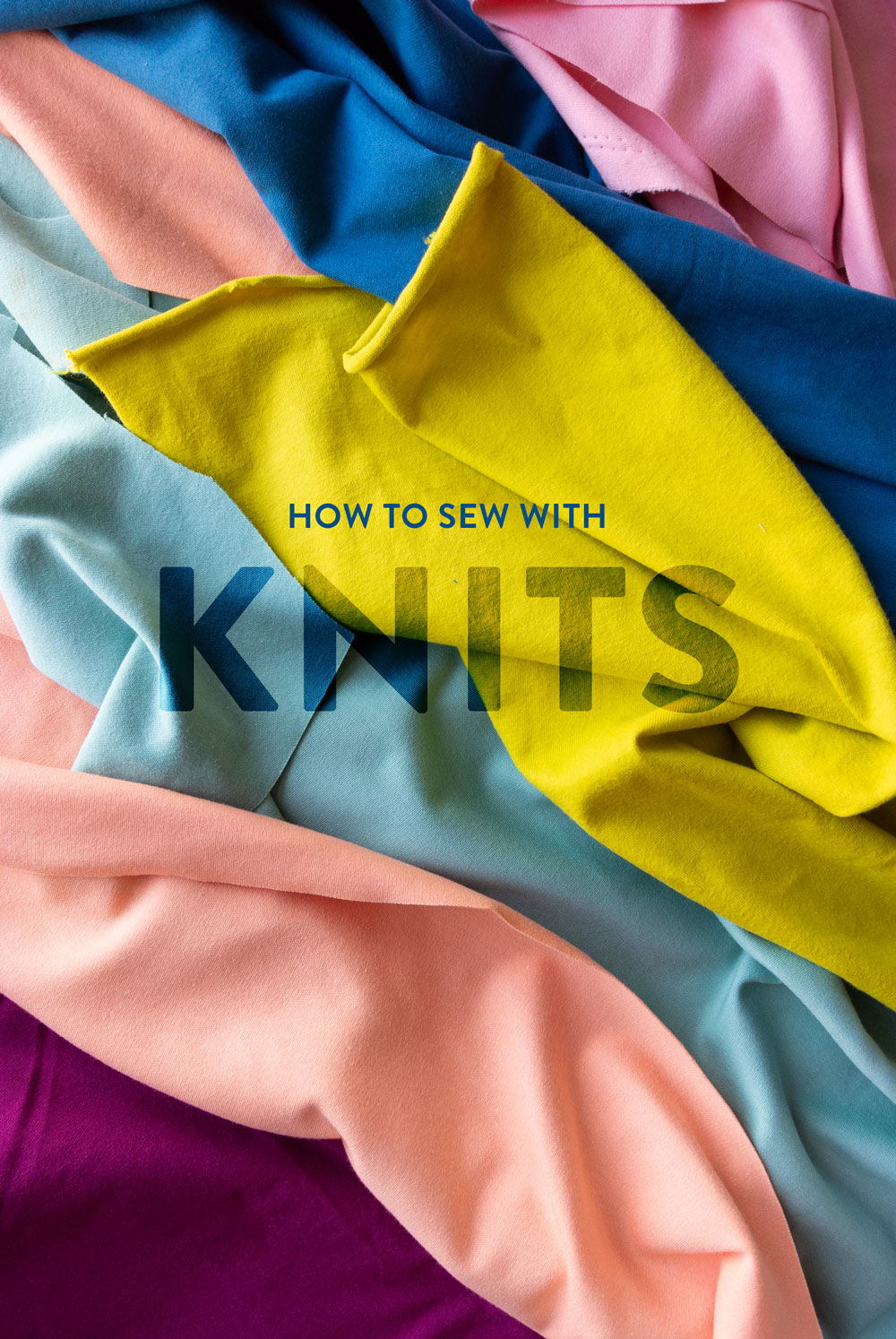
One final thought I’d like to leave with you. Knits don’t fray. Yes, yes, I know we covered that already, but I want it to truly sink in. If you’ve ever dreamed of trying appliqué, or even if you are an appliqué master, think about the possibilities if you don’t have to worry about your fabric fraying. The sky's the limit! Now go on and get down with your stretchy self!
Do you have any knit tips? I still learn new things all the time about this substrate, so I'd love to hear from you!
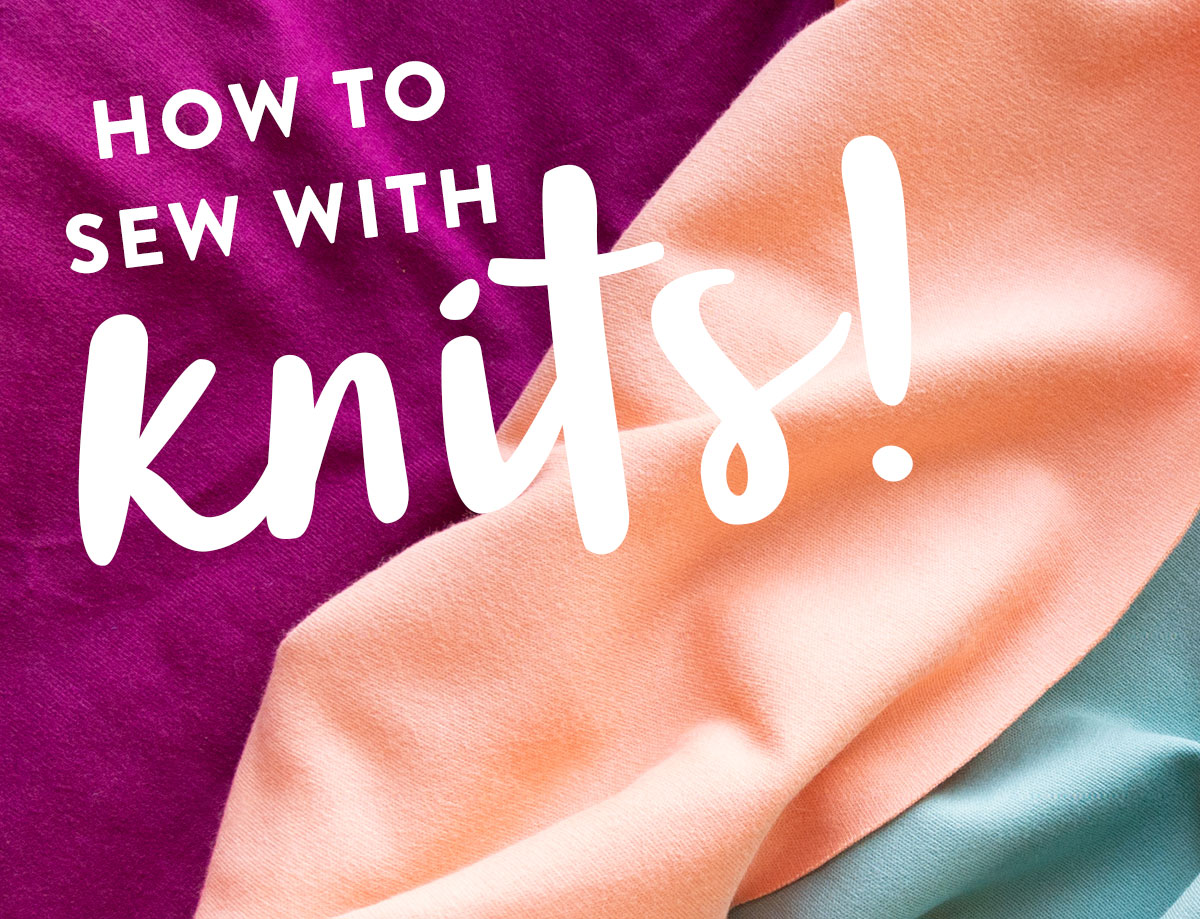
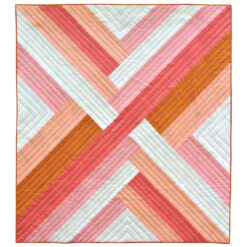
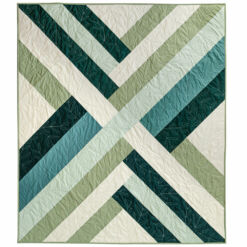
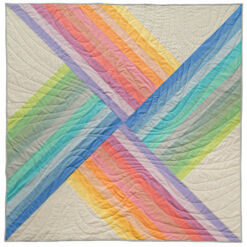
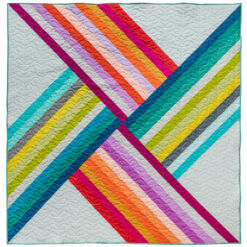
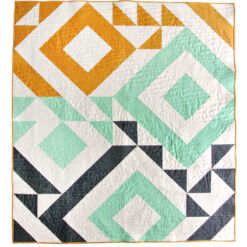
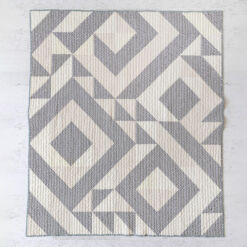
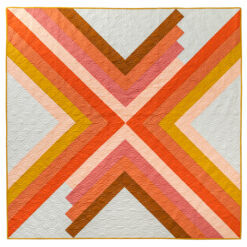
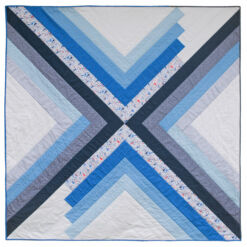
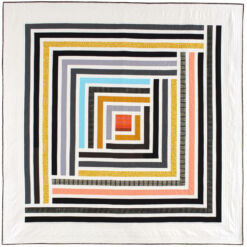
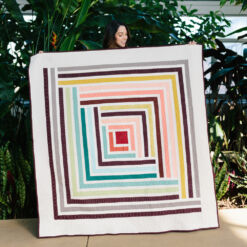
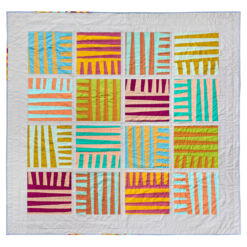
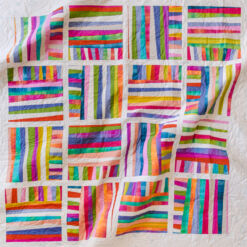
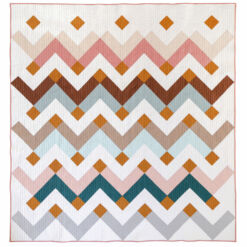
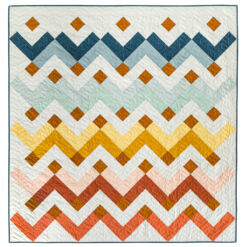
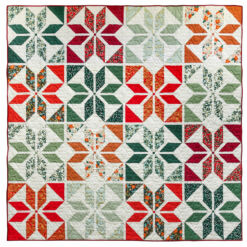
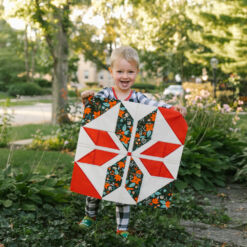
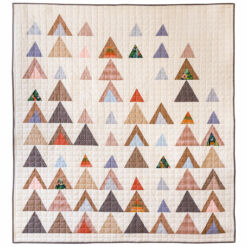
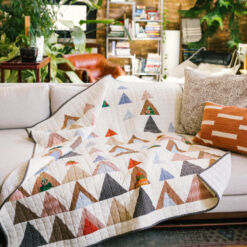
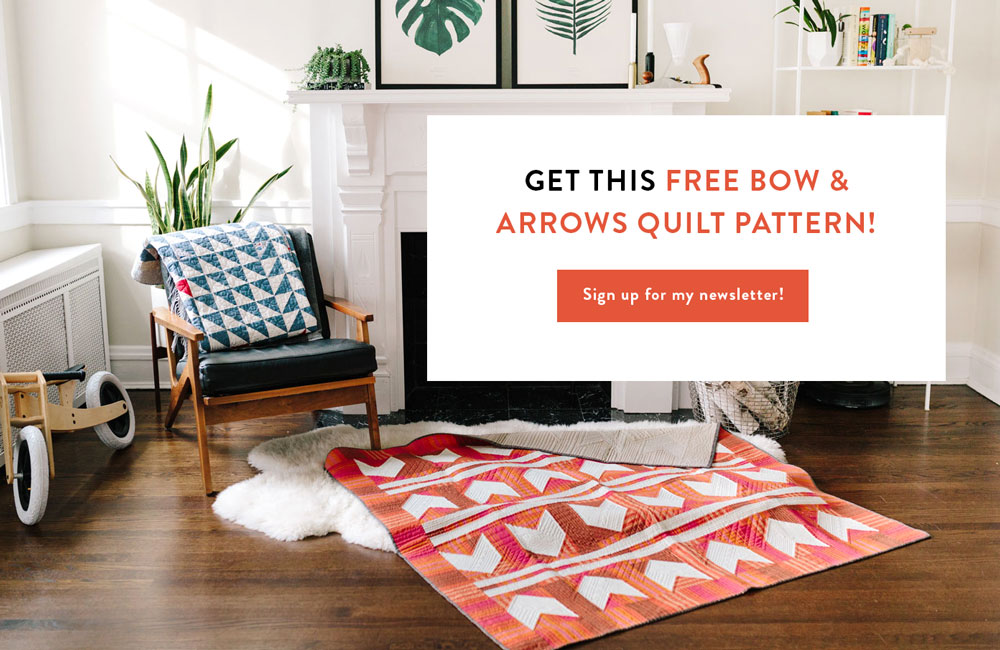
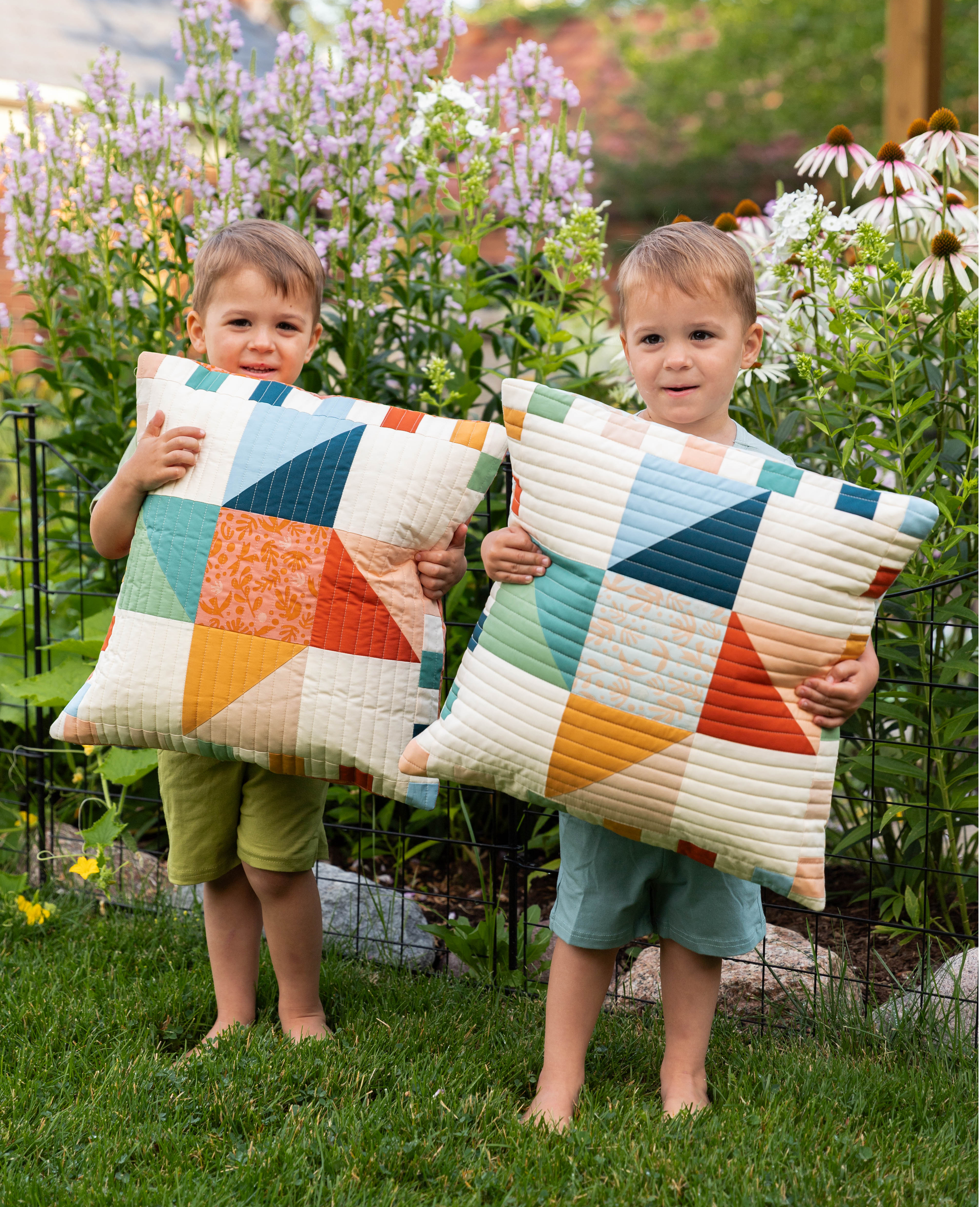

Wow, besides beautiful photography and humorous writing, your posts are always so informative! I’ve learned a ton of things I didn’t know before reading this. Thank you Suzy!
I’m so happy to be helpful! Thanks, Liz!
I agree. I love reading these and they make me a little braver in my quilting journey!
These look beautiful and I bet they make lovely cuddly quilts. Was the binding knit too?
Thank you! It is the backing rolled over to the front.
Thanks, Suzy, for the info about types and weights of knits! Who knew?! (obviously you…😜) The first time I sewed with knits, my machine wouldn’t quit eating the fabric and I cried – but ALAS, I took a break from it, came back and practiced with scraps to get the settings *just right* and I finished the dress with no more tears! This was definitely one of the toughest aspects of sewing for me but was a good reminder that sometimes fresh eyes (and a little patience) is the remedy!
Do you recommend using a stretch thread like maxilock for knit quilting? People rave about it for apparel, but I’m not sure about on a quilt. I’ve also seen some people recommend starching the pieces before sewing. I’m working on a quilt made from my son’s baby sleepers (all cotton knit).
You could use a stretch thread, or you could sew with a zig-zag stitch. Both do the same thing. Since you are making a memory quilt, check out this article. You may want to use stabilizer – https://suzyquilts.com/make-a-memory-quilt/
This is super helpful, thank you!! Any chance Lais (sp?) would be willing to partner with you on a blog post that gives some tips on how to photograph quilts?
I have a bunch of double knit fabric. Can it be used in quilting? Suggestions?
Yes! The Bohemian Garden quilt pattern is perfect for that 😉
I love quilting with knits! I’m so happy to see these tips. Sometimes for old tshirts that I upcycle into quilts, I just discovered a knit interfacing that’s awesome for a little extra support. 🙂 Knit quilts are so COZY too. Thanks for all the great content!
Hi Kate,
Do you finish the quilt in the same manner you would with woven? Do you still use woven for binding?
Thanks!
Kussy
Is it true that when pinning a pattern on knits you don’t have to have the arrows follow the grain as in cotton because knits don’t have grain?
Since knits aren’t woven, they don’t technically have grain, but if you look closely, you can see that there is a direction in how it’s looped together. It is true that you don’t have to worry about stretch and bias as much with knits like you do with woven fabrics.
Hi Suzy. Brilliant advice as usual.
Please can you advise me on the best (or choices!) for stabilising a T-shirt quilt.
So happy you found the article helpful! I would recommend something like Pellon Shape-Flex Fusible Interfacing.
Hi Suzy, I love reading your reviews, you have a way of making things so enjoyable. Hope you’re feeling good, not much longer now for baby to arrive. xox
Hello Suzy, You’re probably too young to recognize the phrase: “Just the facts, mam.” But your posts are so humorous and well written I don’t mind the extra wordage (the spoken version of yardage) at all! That said, you didn’t mention the use of ball point needles when working with knits. Did you just assume we knew that? Remember what happens when one assumes?
To tell you the truth, the two times I’ve tried to using ball point needles my thread kept breaking and the tension got funky. Once I switched back to a regular 80/12 Universal my problems when away. Crazy, right? A ball point needle is still a good thing to point out, even though it didn’t work for me.
Do you find it necessary to change needle types when working with knits? I came across ball point jersey needles and didn’t know if those were necessary.
I’ve never quilted before and have been interested in trying it out. I’m *hoping* to make a giant quilt with squares of some of my daughters old baby clothes, and had no idea whether I could use knits in a quilt. This is so good to know!
Hi, Suzy! You mentioned that you use a walking foot. I just bought a B 570 which has the Bernina Dual Feed System. Do you think the DFS will suffice, or should I get a walking foot? I’m also going to try to my hand at sewing with minky fabric and a walking foot is recommended for that as well. Thank you!
Even though the dual feed is very helpful, when it comes to slippery fabric like minky or stretchy fabric like knit, a walking foot will guide the fabric through the feed dogs with less pull and stretch. You’ll end up with a smoother result, promise 😉
Hi Suzy! I’m having a very difficult time finding a medium weight jersey (10-12 oz) for my Bohemian Garden Quilt. I did find your recommended Birch Organic Cotton Interlock Knit (200 GSM). Would this suffice for a medium weigh knit to avoid transparency. Thanks!
It’s an excellent option! There will be no transparency and it’s wonderfully soft.
Great, fun & informative article!!
Suzy,
You do such amazing work. Thank you for inspiring us. I too am having trouble finding cotton knit. What other sources of cotton knit fabric could you share with us in addition to Birch.
Thanks again.
We’ve had luck with Spoonflower and there are some great options on Esty, just make sure to check out the reviews! Best wishes! 🙂
There are several great online knit suppliers, some have American Milled & organic fabrics. A few I use are Millie & Dot, Raspberry Creek, Isee Fabric, L&E Fabrics, & Carrige House Printery and Knitfabric.com. All great options!